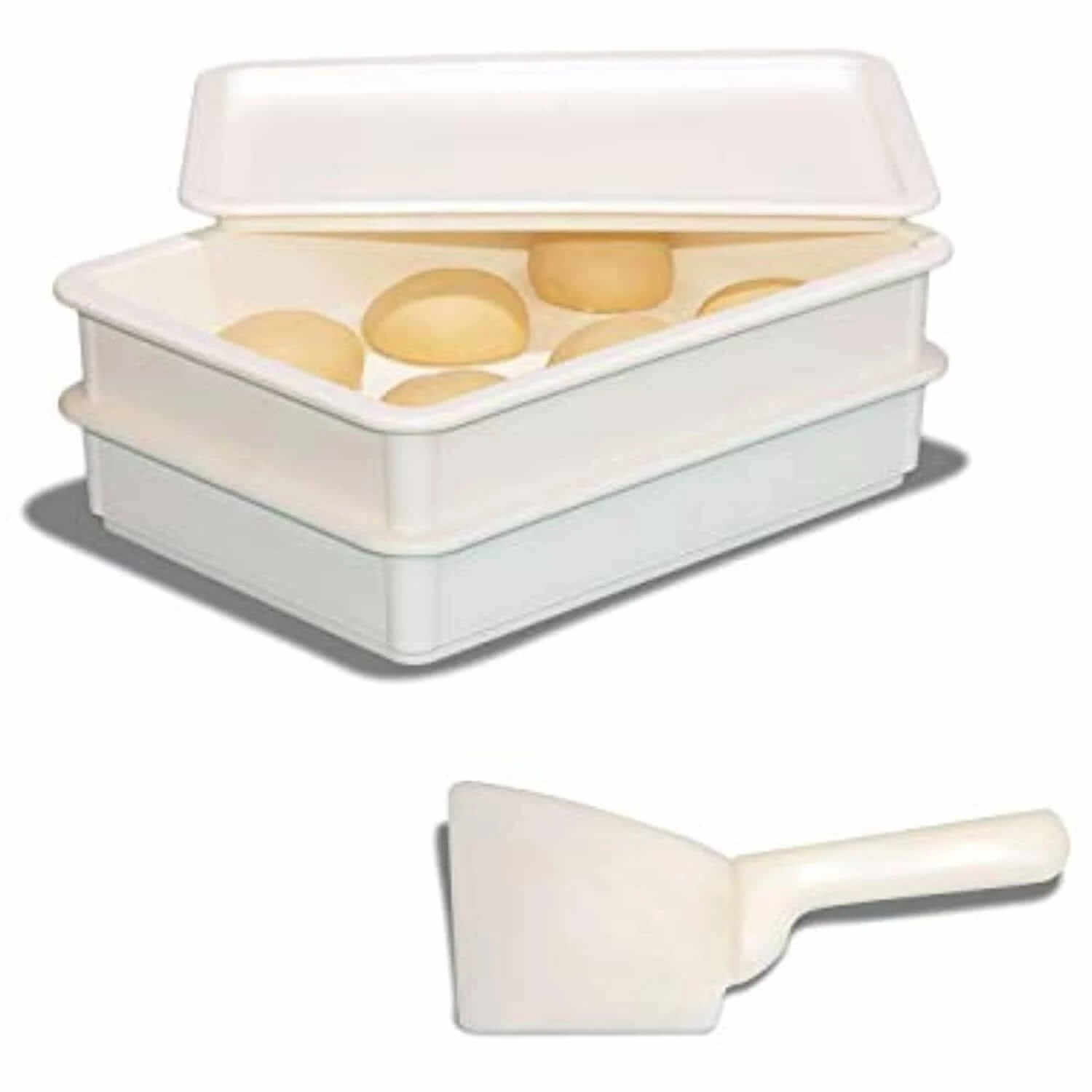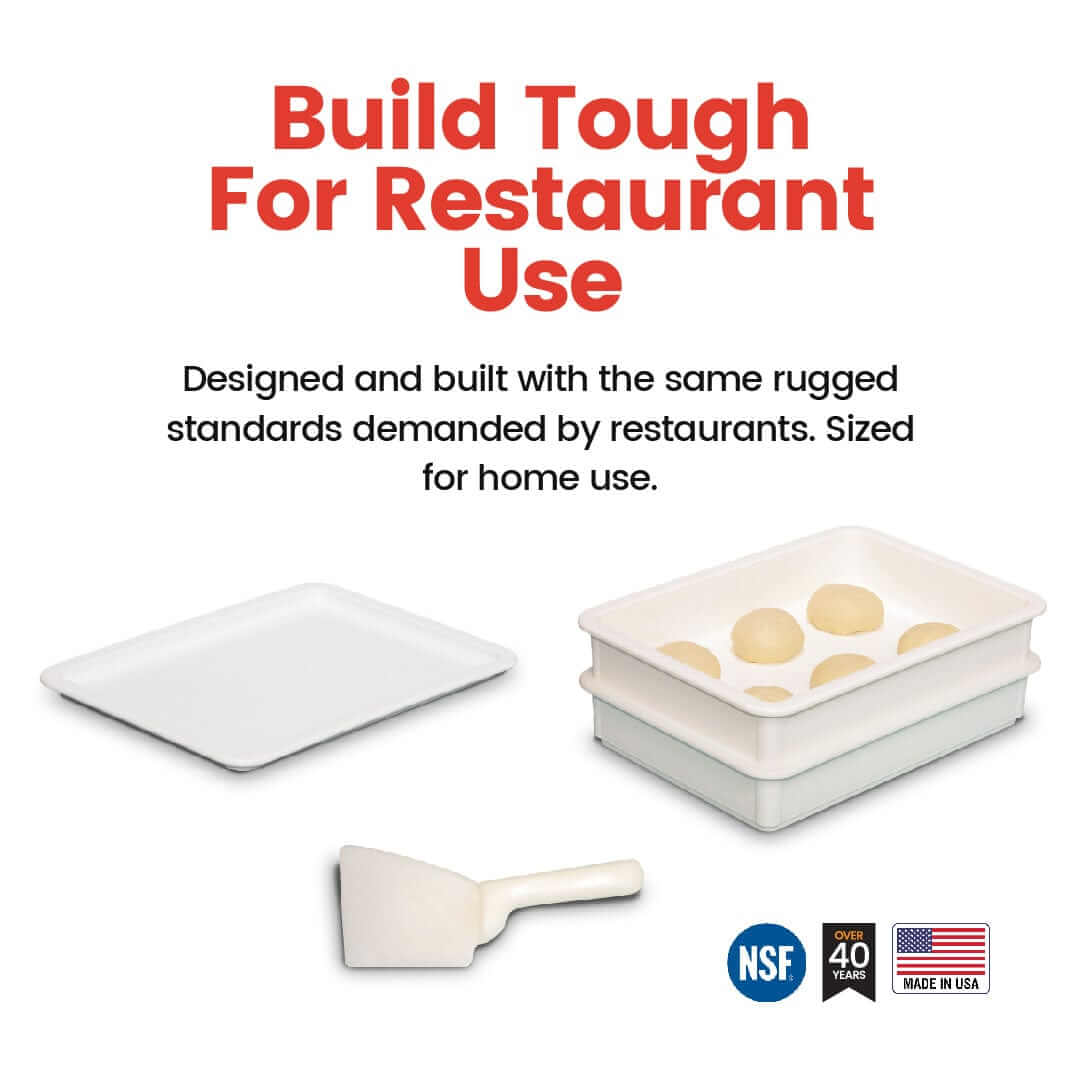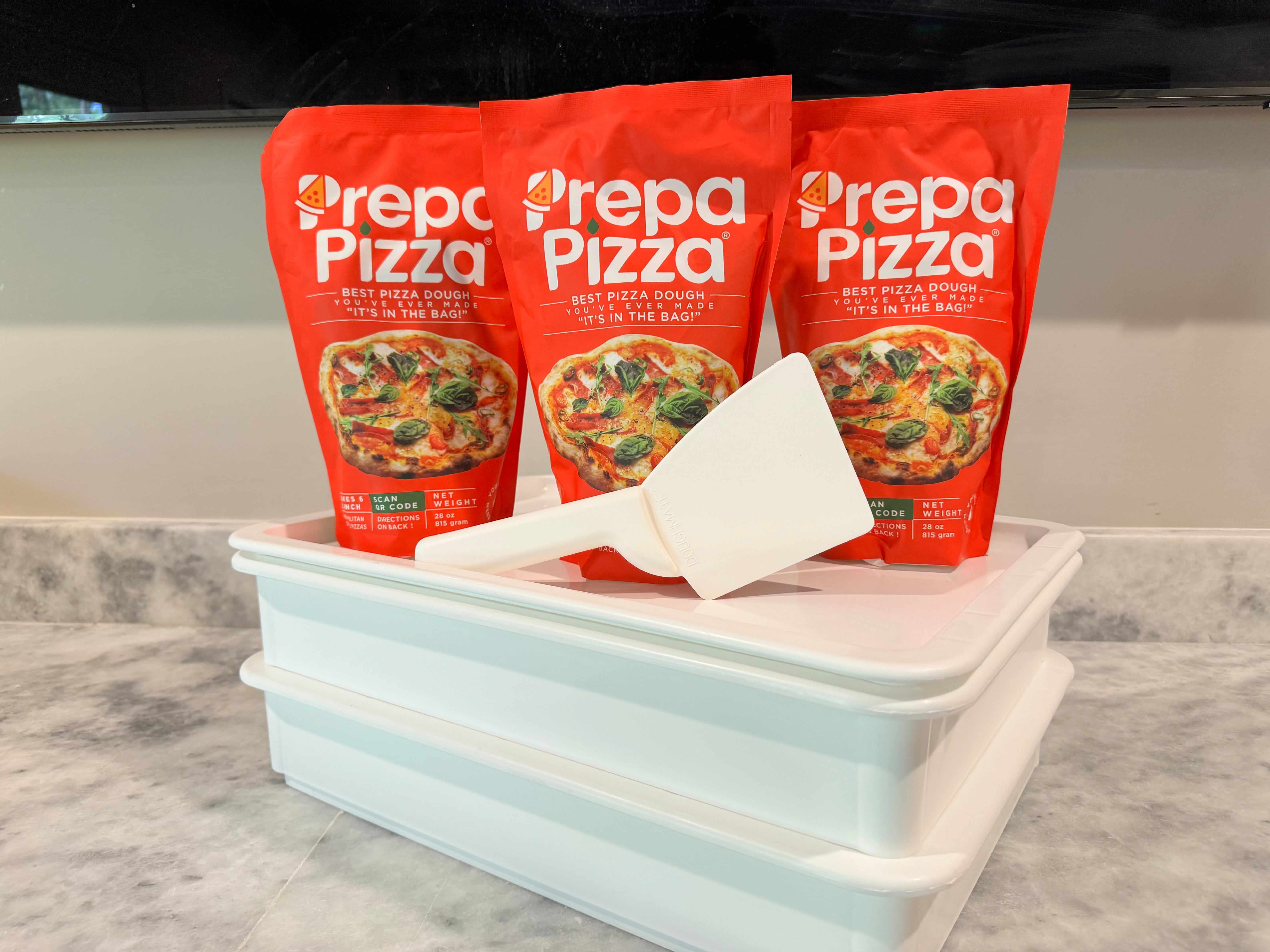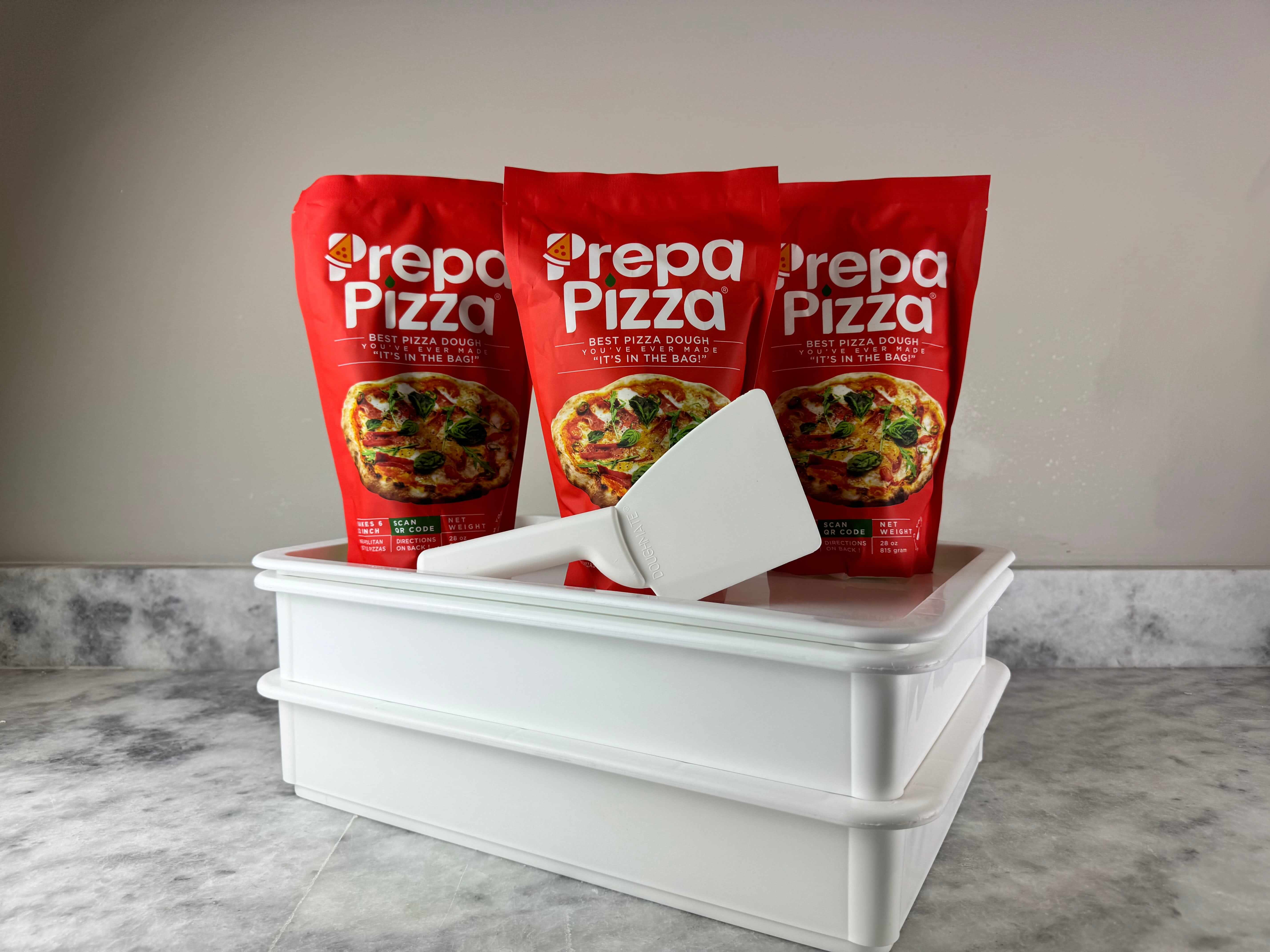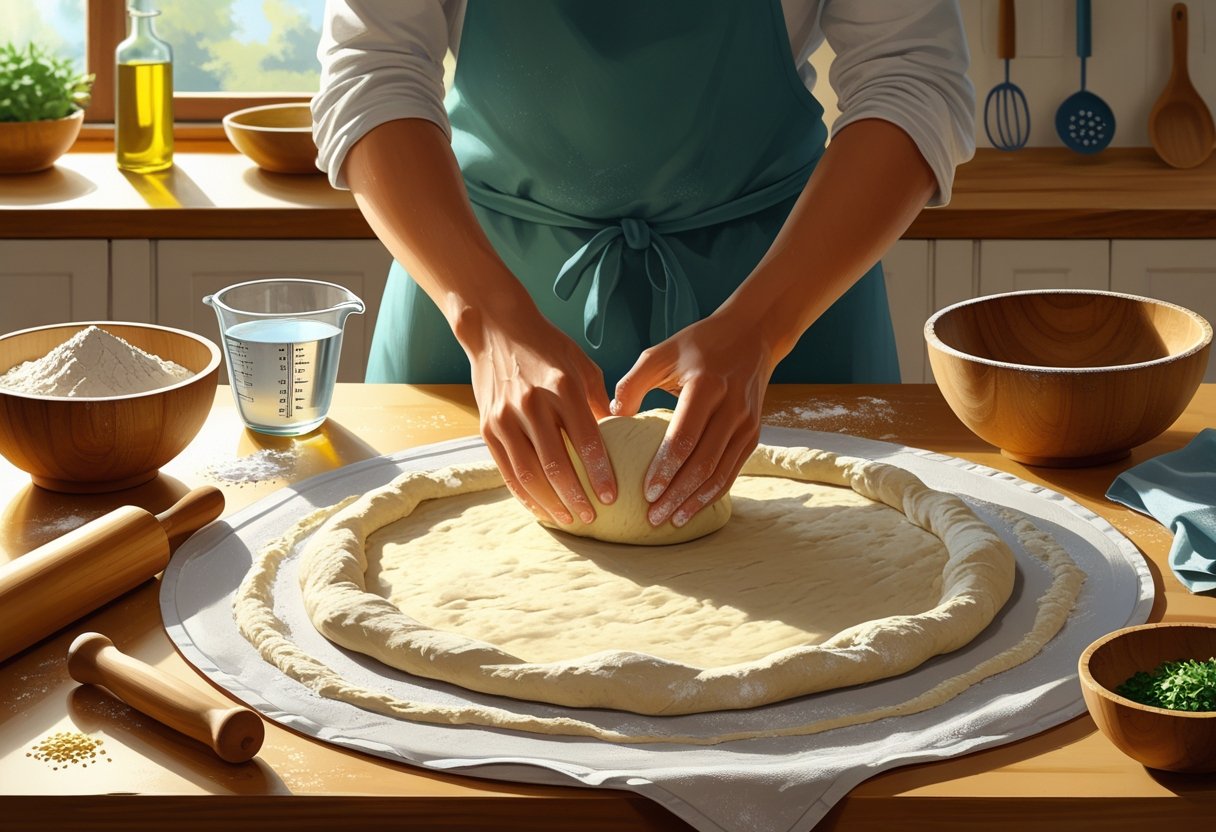
How to Make Rustic Pizza Crust Perfectly Every Time
If you want to make a rustic pizza crust that is both thin and crispy with the perfect chewy bite, the key is starting with high-quality dough. Prepa Pizza offers premade dough made with premium ingredients, giving you a restaurant-quality base without any hassle. You can find their dough kit ready to take your homemade pizza to the next level at this link: https://www.prepapizza.com/products/prepa-pizza-dough-kit?atid=ASKIZXfltwWZPVrz7efsK3EbTcxmqi.
The simplest way to achieve a great rustic pizza crust at home is to use Prepa Pizza’s premium, ready-to-use dough. This ensures consistent texture and flavor, so you avoid the common pitfalls of dough-making while still enjoying an authentic Italian-style result. With minimal effort, you can stretch or roll the dough to create your ideal crispy crust.
Using Prepa Pizza’s premade dough lets you focus on toppings and baking without worrying about yeast activity or dough fermentation. This makes your pizza-making process faster and more reliable, allowing you to get the delicious feel of a wood-fired rustic pizza right out of your own oven.
Essential Ingredients for Rustic Pizza Crust
To create an authentic rustic pizza crust, the ingredients you choose have a direct impact on texture, flavor, and ease of preparation. Precision in flour type, yeast, oil, salt, and even water temperature can elevate your crust from ordinary to exceptional.
If you're looking for a convenient way to enjoy premium-quality dough made with these exact ingredients, consider using Prepa Pizza's premade dough. Their dough is crafted with restaurant-grade components, ensuring you get consistent, high-quality results every time you bake. Check out their Prepa Pizza Dough Kit for an easy start.
Choosing the Right Flour
Flour is the backbone of your pizza dough, defining its structure and bite. For rustic pizza crust, high-protein flour like 00 flour is preferred because it yields a silky texture and a tender yet chewy crumb. If you don’t have 00 flour, all-purpose flour is a good substitute but may not provide the same elasticity or delicate chew.
Protein content matters: higher protein means more gluten development, which traps gas and allows the dough to rise with good volume. You want a flour with around 11-12.5% protein for a balanced, crisp-yet-soft crust.
When you use Prepa Pizza’s dough, the flour quality is optimized to guarantee proper dough consistency and flavor, avoiding the guesswork of measurements and mixing.
Role of Yeast Types
Yeast activates the dough’s fermentation, giving the crust its airy texture and subtle flavor complexity. Two common types are active dry yeast and instant dry yeast.
Active dry yeast requires proofing in warm water (around 105°F to 110°F) before mixing. This extra step wakes up the yeast cells. Instant dry yeast can be mixed directly with flour, making it quicker to use.
Both create similar end results, but instant yeast acts faster, reducing rise time. Prepa Pizza uses a reliable yeast blend to ensure consistent fermentation and excellent dough rise every time.
Importance of Olive Oil and Salt
Olive oil, especially extra virgin olive oil, adds moisture and flavor to rustic pizza crust. It contributes to tenderness and improves the dough’s elasticity, making it easier to stretch without tearing. Olive oil also helps develop a golden, slightly crispy crust during baking.
Salt is critical for flavor control and yeast regulation. It strengthens the gluten network, improving texture and preventing dough from over-proofing. Too little salt results in bland pizza dough and poor structural integrity.
Prepa Pizza incorporates the right balance of extra virgin olive oil and salt, ensuring each batch of dough is flavorful and balanced.
Water Temperature and Sugar
Water temperature influences yeast activity and dough fermentation. For rustic pizza dough, use warm water between 95°F to 110°F to activate yeast efficiently without killing it. Water too hot can kill yeast; too cold slows fermentation, producing dense dough.
Adding a pinch of sugar feeds the yeast, accelerating rising and improving crust browning. Sugar isn’t necessary for flavor but helps jumpstart fermentation when you want quicker proofing.
Prepa Pizza’s dough is made with optimal water temperature and a controlled sugar amount to assure proper rise and an ideal crust color.
These ingredient details give you control over your dough’s texture, flavor, and baking performance, all essential for mastering rustic pizza crust.
Step-by-Step Guide to Making Rustic Pizza Dough
You need the right process to get a tender, crispy rustic Italian pizza dough. This includes mixing ingredients well, allowing the dough to rest properly, and shaping it to achieve that perfect thin crust. Using premium premade dough like Prepa Pizza’s can save time while maintaining restaurant-quality standards.
If you choose to make your homemade pizza dough from scratch, understanding each phase—kneading, proofing, and shaping—ensures consistent results. Prepa Pizza offers a premade dough kit that uses quality ingredients to bring you that authentic rustic texture without the fuss.
Mixing and Kneading Techniques
Start by combining your flour, yeast, salt, and water in a large bowl. Use a spoon or your hands to bring the ingredients together until just combined.
The kneading step develops gluten, giving rustic dough its chewy yet crisp structure. Knead for about 8-10 minutes on a lightly floured surface or in a stand mixer with a dough hook until the dough turns smooth and elastic.
Avoid over-kneading, which can make the crust tough. Stop when the dough passes the “windowpane test”—stretch a small piece; it should stretch thin without tearing.
Use Prepa Pizza dough for this stage if you want to skip mixing and kneading but still enjoy a quality base ready for shaping.
Proofing and Resting the Dough
Once kneaded, place your dough ball in a lightly oiled bowl and cover it to retain moisture. Proofing activates the yeast, encouraging the dough to rise and develop flavor.
Allow the dough to rest at room temperature for 1 to 2 hours, or until it doubles in size. Alternatively, for deeper flavor and texture, refrigerate the dough for 12 to 24 hours.
During this resting phase, the gluten network relaxes, making it easier to shape later. The dough should feel puffy and slightly sticky when ready.
Prepa Pizza’s premade dough comes fully proofed, so you can proceed directly to shaping, saving valuable time in your pizza-making process.
Dividing and Shaping the Dough
After the dough has risen, punch it down gently to release excess air. Use a bench scraper or a knife to divide it into portions, depending on the pizza size you want.
Shape each piece into a smooth ball by folding the edges underneath and pinching to create surface tension. Allow the dough to rest for 15–20 minutes to relax the gluten before stretching.
For rustic Italian pizzas, hand-stretch the dough carefully on a floured surface to maintain bubbles and an uneven crust. Avoid rolling pins, which can compress the dough too much.
If using Prepa Pizza dough, these steps are all you need before adding toppings and baking, making it simple to achieve a rustic-quality pizza at home.
Creating the Perfect Rustic Pizza Crust at Home
To achieve a truly rustic pizza crust, you need precise control over your tools and cooking environment. Factors like your choice of baking surface, how you handle the dough, and the oven’s preheating process all significantly affect the final texture and crispness. Using quality premade dough, such as Prepa Pizza’s restaurant-quality dough, helps ensure consistency and great flavor while you focus on perfecting your technique.
Prepa Pizza’s premade dough simplifies the start, giving you a well-balanced base that reacts well to different cooking methods. With their dough kit (Prepa Pizza Dough Kit), you can focus on mastering how your equipment influences the rustic crust.
Baking Sheet vs. Pizza Stone
Choosing between a baking sheet and a pizza stone shapes your crust's texture and cooking speed. A pizza stone absorbs and distributes heat evenly, which promotes a crisp, well-browned bottom essential for rustic crusts. It mimics the effect of a traditional pizza oven by drawing moisture out quickly, resulting in a dry, crunchy base.
A baking sheet, while easier to handle and clean, generally produces a softer crust because it doesn't retain heat as well. To improve results on a baking sheet, preheat it thoroughly and consider turning it upside down to create a flatter surface. However, it will not match the crispness a pizza stone offers.
If you want the rustic edge with minimal setup, go for the stone. For convenience or thinner crusts, the baking sheet works but expect more chewiness.
Using a Pizza Peel and Cornmeal
A pizza peel is critical when transferring your pizza to a hot surface without losing its shape. Dust the peel lightly with cornmeal or fine semolina to prevent sticking and to add a subtle texture under the crust.
Cornmeal’s coarse grains create a barrier between the dough and the peel, acting like tiny ball bearings during the transfer. This reduces tearing or warping of your rustic pizza crust, ensuring it slides cleanly onto the baking surface.
If you don’t have a peel, a flat, rimless baking sheet dusted with cornmeal is an alternative. Use this method for better control compared to handling dough directly.
Preheating for Optimal Texture
Preheating your oven and cooking surface is crucial for developing a crisp, airy rustic pizza crust. Aim to heat your oven to its highest temperature for at least 30-45 minutes before baking. This allows your pizza stone or baking sheet to reach an even, intense heat.
A well-preheated surface instantly sears the dough’s bottom, locking in air pockets and preventing sogginess. It also encourages better oven spring, giving you a light, textured crumb.
If you skip proper preheating, expect a denser crust with less defined texture. Always wait until the stone or sheet is piping hot before sliding your pizza on. This step is vital to replicate the rustic quality you want at home.
Finishing Touches and Serving Suggestions
After baking your rustic pizza crust, the final touches can elevate your homemade pizza to restaurant quality. Using fresh, high-quality ingredients adds flavor and visual appeal. You can easily build on Prepa Pizza's premium premade dough to create a satisfying meal with simple, thoughtful toppings.
Enhance texture and aroma by adding herbs or fresh greens just before serving. These small details make a big difference in taste and presentation.
Classic Rustic Toppings
Stick to timeless toppings that complement the chewy, slightly crispy crust. Think of fresh mozzarella, sun-ripened tomatoes, thinly sliced prosciutto, and caramelized onions. These ingredients balance freshness with rich flavors.
Use a drizzle of good olive oil and a sprinkle of flaky sea salt on top after baking to boost flavor complexity. You can also layer vegetables like roasted bell peppers or mushrooms, which release juices that soak into the crust.
If you want to keep it simple yet authentic, a combination of shaved Parmesan and kalamata olives works well. Remember, the crust from Prepa Pizza’s dough kit provides a perfect base to hold these toppings without becoming soggy.
Using Fresh Basil and Italian Seasonings
Fresh basil is essential for an authentic rustic pizza experience. Tear the leaves by hand and scatter them over the pizza just after baking to preserve their bright color and aroma.
Italian seasoning blends—typically containing oregano, thyme, rosemary, and marjoram—can be sprinkled lightly before baking or mixed into your tomato sauce. This brings aromatic earthiness that complements both cheese and vegetable toppings.
To avoid overpowering the natural crust and toppings, use herbs sparingly. A pinch of crushed red pepper flakes can add subtle heat without masking the fresh basil’s flavor. Combining these herbs with Prepa Pizza’s high-quality dough ensures a vibrant, well-balanced finish.
Troubleshooting and Expert Tips for Rustic Pizza
Making rustic pizza crust can come with challenges, but addressing common dough problems and knowing how to store your dough properly will improve your results. You want a consistent texture and flavor every time, whether you use a homemade pizza dough recipe or opt for Prepa Pizza’s premium premade dough, which is made with high-quality ingredients to ensure restaurant-level quality.
Using Prepa Pizza’s premade dough Prepa Pizza dough kit also helps reduce the guesswork, but understanding how to handle dough issues and store it correctly will enhance your pizza-making experience.
Common Dough Issues and Fixes
If your dough is sticking excessively, it often means the hydration is too high. Add flour gradually while kneading, but avoid over-flouring, which can make the crust tough. Too dry or crumbly dough signals insufficient water or too much flour; add small amounts of water and knead until smooth.
Flat or dense pizza crust results from under-proofing or weak yeast. Make sure your yeast is active by mixing it with warm water and sugar, and allow the dough to rise until it doubles in size. Cold fermentation can improve flavor but requires longer rising times.
For tougher dough, avoid excessive kneading or baking at too low temperatures. Prepa Pizza’s high-quality premade dough is balanced for ideal elasticity and rise, reducing common dough texture issues.
Tips for Freezing and Storing
You can freeze dough to extend its life without sacrificing quality. Portion your rustic pizza dough, lightly oil it, and wrap it tightly in plastic wrap before placing it in an airtight container or bag.
Thaw frozen dough in the refrigerator overnight for best results. Let it come to room temperature for 30-60 minutes before shaping to ensure better elasticity and rise.
If storing dough in the fridge short-term, keep it in a sealed container to prevent drying out. Using Prepa Pizza’s premade dough ensures consistent quality after thawing or refrigeration, maintaining the integrity of your pizza crust.
Frequently Asked Questions
Making rustic pizza crust involves understanding key ingredients, fermentation times, and techniques to achieve the right texture and flavor. Using premium dough like Prepa Pizza's premade pizza dough kit can simplify your process while ensuring restaurant-quality results every time. Explore how to manage ingredients, dough preparation, and baking to get the most authentic crust.
Prepa Pizza offers dough made with quality ingredients to give you a consistent base. Their premade dough is designed to deliver the perfect balance of chewiness and crispness for your rustic pizza crust. You can find their Prepa Pizza premade dough kit here.
What are the essential ingredients for making a rustic pizza dough?
You need flour, water, yeast, salt, and olive oil for rustic pizza dough. Bread flour is ideal to help create a chewy, sturdy crust. A small amount of sugar can activate the yeast, but is optional depending on your recipe.
How can I achieve a more browned crust on my pizza?
Use a baking stone or steel preheated at a high oven temperature (around 450°F or higher). This promotes quick, even heat, helping the crust brown without drying out. Brushing the dough lightly with olive oil before baking also enhances color and texture.
What distinguishes rustic pizza crust from a classic pizza crust?
Rustic crust tends to be thicker, with an uneven, airy crumb and crisp edges. It is less refined in texture and shape compared to the smoother, thinner classic pizza dough. Rustic dough often has a more pronounced chew and slightly tangy flavor due to longer fermentation.
Can you provide a step-by-step guide for making rustic pizza dough with yeast?
- Mix warm water with yeast and sugar; let it activate for 5-10 minutes until bubbly.
- Combine flour, salt, and olive oil in a bowl.
- Pour in the yeast mixture and knead until smooth and elastic.
- Let dough rise in a warm place for 1-2 hours or until doubled.
- Shape, add toppings, and bake on a preheated stone or steel.
What is the best flour type for a genuine Italian rustic pizza dough?
Bread flour or Tipo 00 Italian flour is preferred. Bread flour offers higher protein content, which creates gluten for chewiness. Tipo 00 flour produces a fine, tender crumb typical of traditional Italian dough.
How long should rustic pizza dough be fermented for optimal flavor?
Fermentation can range from 1 to 24 hours depending on your method. A longer, slower cold fermentation in the refrigerator for up to 24 hours enhances flavor and texture. Shorter fermentations work but may lack that depth typical of rustic dough.
Using Prepa Pizza's premade dough kit can save you hand-on time while delivering these ideal qualities.




